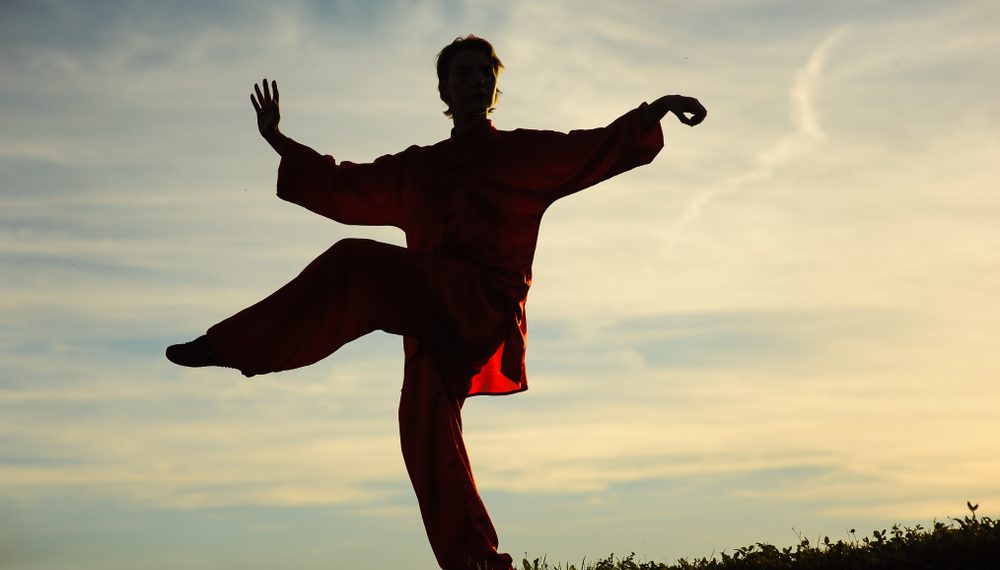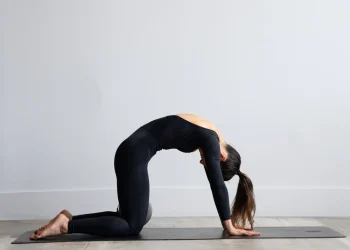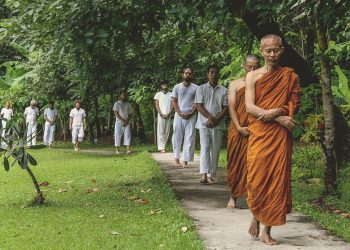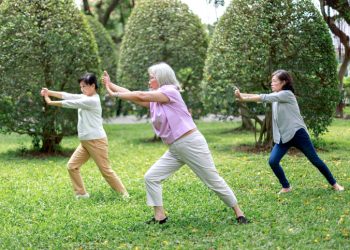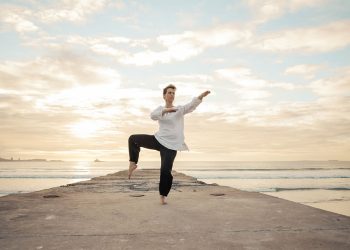Tai Chi walking, often called “walking meditation” or “Tai Chi gait,” is a fundamental practice that bridges the gap between static postures and dynamic movement. While it may appear deceptively simple after all, we’ve been walking since we were toddlers. Tai Chi walking is a sophisticated practice that requires patience, awareness, and dedication to master. This article provides practical guidance for practitioners at all levels to refine their Tai Chi walking technique.
Understanding the Fundamentals
Before diving into specific tips, it’s essential to understand what makes Tai Chi walking distinct from ordinary walking. In everyday life, we walk automatically, often rushing from one place to another with little awareness of our body mechanics. Tai Chi walking transforms this mundane activity into a moving meditation that cultivates balance, strengthens the legs, improves coordination, and deepens mind-body connection.
The core principle is simple yet profound: shift your weight completely from one leg to the other while maintaining perfect balance, alignment, and mental presence throughout each transition. Every movement is deliberate, controlled, and executed with full awareness.
Essential Tips for All Practitioners
Start With Proper Posture
Your foundation begins before you take your first step. Stand with feet shoulder-width apart, knees slightly bent, and tailbone tucked slightly under. Imagine a string gently pulling the crown of your head toward the sky while your feet root into the earth. Your shoulders should be relaxed and down, chest slightly hollowed, and chin tucked slightly in.
This alignment creates what Tai Chi practitioners call the “central equilibrium”—a state where your body is perfectly balanced and ready to move in any direction. Check your posture regularly, as it’s easy to drift into old habits when your attention wanders.
Master the Weight Shift
The hallmark of Tai Chi walking is the complete transfer of weight from one leg to the other. This isn’t a 60-40 or 70-30 split—aim for 100 percent of your weight on one leg before stepping with the other. This practice strengthens the supporting leg dramatically and develops exceptional balance.
Begin by standing on one leg while the other remains lightly touching the ground. Feel the entire weight of your body sinking into that supporting leg, particularly through the heel and the ball of the foot. The unweighted leg should feel so light that you could lift it without any preparation or shifting.
Synchronize Movement With Breath
Breath is the bridge between body and mind in Tai Chi practice. Coordinate your stepping with your breathing—typically, you’ll inhale as you lift and move the empty leg forward, and exhale as you shift weight onto it. This synchronization calms the nervous system and helps maintain a steady, meditative pace.
Your breath should be natural, deep, and originating from the lower abdomen (the dantian in Chinese philosophy). Avoid holding your breath or breathing shallowly from the chest. If you find yourself out of breath, you’re moving too quickly or tensing unnecessarily.
Practice the “Empty Step”
One of the most valuable drills in Tai Chi walking is the empty step. After shifting all your weight onto one leg, lift the unweighted foot completely off the ground—even just a quarter inch—and hold it there for several seconds. This proves that your weight transfer is complete and builds tremendous stability.
When you can hold this position comfortably for 5-10 seconds on each side, your weight shifting has reached a new level of proficiency. This exercise also reveals any subtle imbalances or compensations in your alignment.
Common Pitfalls to Avoid
Rushing the Process
Perhaps the most common mistake is moving too quickly. In our fast-paced world, slowing down feels unnatural, even uncomfortable. Many practitioners unconsciously speed up their Tai Chi walking, defeating its meditative purpose and missing crucial details in the movement.
The solution is simple but not easy: slow down even more than feels comfortable. If you think you’re moving slowly, try cutting your speed in half. The slower you move, the more you’ll discover about your body mechanics and the more challenging the practice becomes.
Incomplete Weight Transfers
Many practitioners shift only 70-80 percent of their weight, keeping some weight on the “empty” leg as insurance against losing balance. While this feels safer, it prevents you from developing genuine stability and strength.
Work on this gradually. Begin with shorter walking sessions where you can maintain focus on complete weight shifts. As your supporting leg strengthens and your balance improves, full weight transfers will feel more natural and secure.
Leaning or Tilting
Watch for any tendency to lean your torso forward, backward, or to the sides during weight shifts. Your spine should remain vertical throughout the movement, as if you’re walking along a narrow wall where any lean would cause you to fall.
A helpful practice is to perform Tai Chi walking near a mirror (from the side view) or record yourself occasionally. Visual feedback can reveal tilting patterns you can’t feel internally.
Tension in the Upper Body
Beginners often carry tension in their shoulders, arms, or neck while concentrating on their lower body. This tension disrupts the flow of chi (energy) and creates unnecessary fatigue.
Regularly scan your body from head to toe during practice. Let your arms hang naturally at your sides or hold them in a gentle, rounded position in front of your body. Your shoulders should feel heavy and relaxed, as if they’re melting downward.
Forgetting the Back Leg
While much attention goes to the forward-moving leg, the back leg does crucial work. As you shift weight forward, the back leg should straighten naturally (but not lock), and you should feel a gentle stretch through the back of the leg and into the heel.
This extension from the back heel creates powerful groundedness and helps maintain balance. Think of your back leg as pushing you forward, rather than your front leg pulling you.
Best Practices for Consistent Improvement
Establish a Regular Practice Schedule
Consistency trumps duration. Twenty minutes of daily Tai Chi walking will produce better results than an hour-long session once a week. The cumulative effect of daily practice creates lasting changes in your neuromuscular patterns and body awareness.
Morning practice can set a peaceful, centered tone for your entire day. Evening practice helps release the day’s accumulated tension and prepares your body and mind for restful sleep.
Use Mental Imagery
Experienced practitioners often use visualization to enhance their practice. Imagine that you’re walking through water, which naturally slows your movement and creates a sense of gentle resistance. Or visualize your body as a perfectly balanced scale, with weight shifting smoothly from one side to the other.
Another powerful image is to imagine your feet are kissing the ground with each step—tender, mindful contact rather than stomping or striking.
Practice Different Walking Patterns
While forward walking is fundamental, don’t limit yourself to straight lines. Practice backward walking, which is particularly challenging and beneficial for balance. Try walking in circles, figure-eights, or along curved paths. Lateral (side-to-side) stepping adds another dimension to your practice.
Each variation challenges your balance and coordination differently and keeps your practice fresh and engaging.
Integrate Arm Movements
Once you’re comfortable with basic Tai Chi walking, add simple arm movements. Your arms might float up as you step forward and sink down as you shift weight, or they might move in gentle circles coordinated with your stepping. These additions transform Tai Chi walking into a full-body moving meditation.
Start with simple, symmetrical arm patterns and gradually explore more complex movements as your coordination develops.
Practice Barefoot When Possible
Whenever safe and appropriate, practice Tai Chi walking barefoot. This enhances proprioception—your sense of where your body is in space—and strengthens the many small muscles in your feet that support balance.
Walking barefoot on grass, sand, or smooth stones adds pleasant sensory variety to your practice while maintaining proper form.
Expert Advice for Advancing Your Practice
Focus on the Transitions
Master teachers emphasize that the magic of Tai Chi happens in the transitions between movements, not in the static positions. Pay special attention to that moment when your weight is shifting from one leg to the other. This is where balance challenges arise and where the most profound learning occurs.
Can you make these transitions so smooth that an observer couldn’t identify the exact moment when your weight transfers? This seamless quality represents advanced practice.
Cultivate “Listening Energy”
As you walk, develop what Tai Chi masters call “listening energy”—a quality of attention that monitors every sensation in your body. Feel the pressure distribution across your foot, the subtle engagement of muscles in your supporting leg, the gentle sway of your arms, the movement of breath in your abdomen.
This heightened awareness is both the method and the goal of Tai Chi walking. It brings you completely into the present moment and away from mental chatter about the past or future.
Study With Multiple Teachers
While it’s valuable to have a primary teacher, occasionally studying with other instructors exposes you to different perspectives and emphases within Tai Chi. One teacher might focus heavily on structural alignment, while another emphasizes breath and energy flow. Each perspective enriches your understanding.
Workshops, seminars, and even online videos can supplement your regular training, provided you approach them with discernment and don’t try to mix too many different styles at once.
Record Your Progress
Keep a simple practice journal noting the duration of your sessions, what you worked on, challenges you encountered, and insights you gained. Over time, this record reveals patterns and progress that might not be apparent day-to-day.
You might also periodically video record your practice. Watching yourself from an external perspective often reveals habits and issues that you can’t perceive internally.
Be Patient With Plateaus
Like any sophisticated skill, Tai Chi walking involves periods of rapid progress alternating with frustrating plateaus where improvement seems to stall. These plateaus are actually periods of consolidation—your nervous system is integrating what you’ve learned at a deep level.
Trust the process, maintain consistent practice, and the next breakthrough will come. Some of the most profound advances happen suddenly after weeks or months of seemingly static practice.
Conclusion
Tai Chi walking is far more than a warm-up exercise or a simplified version of Tai Chi forms. It’s a complete practice in itself that can be explored for a lifetime. Whether you’re a beginner taking your first mindful steps or an experienced practitioner refining subtle details, these tips provide a roadmap for continuous improvement.
Remember that Tai Chi walking, at its essence, is about presence—bringing your full attention to this moment, this breath, this step. When practiced with patience and sincerity, this simple act of walking becomes a profound meditation that cultivates balance, strength, calm, and centeredness that extend far beyond your practice sessions into every aspect of your life.
Start where you are, practice regularly, be patient with yourself, and enjoy the journey. Each step is both the path and the destination.

